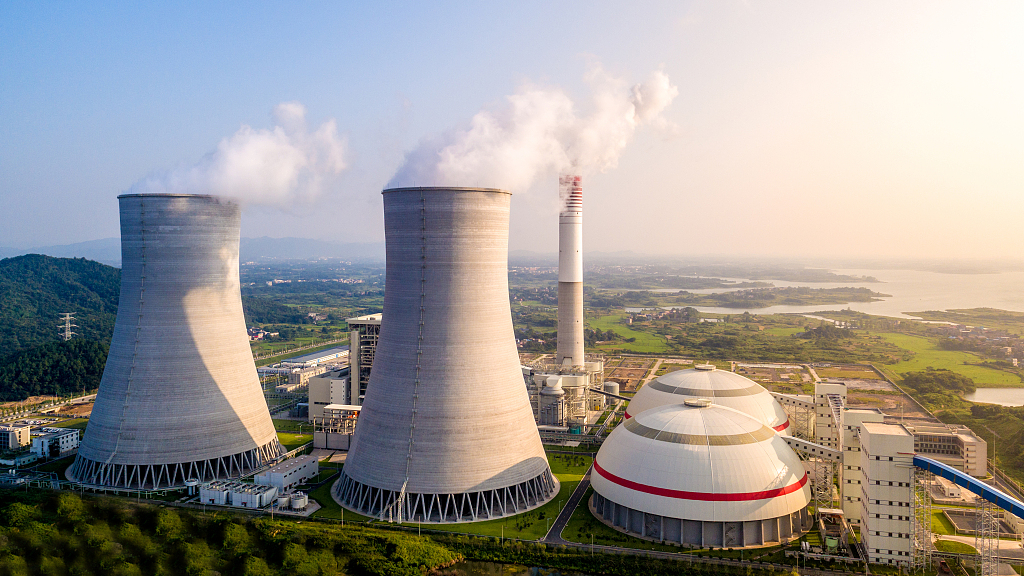The first year of the 14th Five-Year Plan (2021-2025) is key to promoting pollution and carbon reduction and the overall green transformation of economic and social development.
Many areas across the country have recently released detailed plans for ecological and environmental protection over the 14th Five-Year Plan period (2021-2025). In addition to pollution prevention and control, they also pay attention to the impact of green and low-carbon transformation on industrial development and focus on realizing the dual carbon goals through market mechanisms.

Many places across the country have released detailed plans for ecological and environmental protection during the 14th Five-Year Plan period (2021-2025) recently. /VCG
Many places across the country have released detailed plans for ecological and environmental protection during the 14th Five-Year Plan period (2021-2025) recently. /VCG
Beijing will develop around five ecological dimensions
During the 14th Five-Year Plan period, Beijing, capital of China, will focus on the five dimensions of lower carbon, cleaner air, cleaner water, safer soil and a more livable ecology to achieve fundamental improvements in the ecological environment. Beijing hopes to reduce the density of the polluting PM2.5 particles to 35 micrograms per cubic meter by 2025, effectively eliminating heavy pollution. It also projects eliminating inferior Class V water and steadily improving ecological and environmental quality indicators.
Inner Mongolia Autonomous Region expects new energy boost
North China's Inner Mongolia Autonomous Region envisages reducing energy intensity per unit of GDP by 15.5 percent and keeping total energy consumption within 20 million tons of standard coal (coal with a calorific value of 7,000 kcal/kg). By 2025, new energy should account for more than 45 percent of installed power generation, and coal consumption should fall below 75 percent, the region's plan says

The density of PM2.5 in Beijing will be reduced to 35 micrograms per cubic meter by 2025, basically eliminating heavy pollution, the plan says. /VCG
The density of PM2.5 in Beijing will be reduced to 35 micrograms per cubic meter by 2025, basically eliminating heavy pollution, the plan says. /VCG
Qinghai will effectively and comprehensively protect China's water tower
Located on Qinghai-Tibet plateau, parts of which span southwest China's Tibet Autonomous Region and northwestern Qinghai Province, Sanjiangyuan, China Water Tower, is the source of the Yangtze, Yellow, and Lancang Rivers, three of the main water systems in Asia. According to Qinghai's plan for the 14th Five-Year Plan period, China Water Tower will be fully and effectively protected by 2025, and by 2035, it will have a solid ecological environment.
Coal consumption in the Pearl River Delta region will decline
During the period, the proportion of coal consumption in primary energy consumption in south China's Guangdong Province will be controlled below 31 percent, and total coal consumption in the Pearl River Delta region will achieve negative growth. Non-fossil energy will account for more than 29 percent of the province's primary energy consumption, and natural gas will account for 14 percent of primary energy consumption.

The proportion of coal consumption in primary energy consumption in Guangdong will be controlled below 31 percent, and the total coal consumption in the Pearl River Delta region will achieve negative growth. /VCG
The proportion of coal consumption in primary energy consumption in Guangdong will be controlled below 31 percent, and the total coal consumption in the Pearl River Delta region will achieve negative growth. /VCG
China embarked on a green transformation in the first year of the 14th Five-Year Plan, with carbon peak and carbon neutrality goals as the guiding ideology.
As of December 22, China's national carbon market has included 2,162 key emitters in the power generation industry in the first implementation period from January 1 to December 31, covering about 4.5 billion tons of carbon dioxide emissions annually.
In the first three quarters of this year, the share of clean energy consumption in China's total energy consumption increased by 0.6 percentage points year on year, energy consumption per unit of GDP decreased by 2.3 percent, according to National Bureau of Statistics.
China will continue to adjust its industrial and energy structures and intensify efforts to conserve energy and reduce carbon emissions in key sectors such as coal, electricity and steel, and continue to reduce energy intensity.
(If you want to contribute and have specific expertise, please contact us at nature@cgtn.com.)

